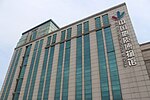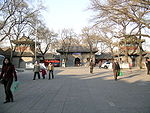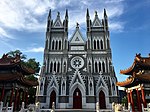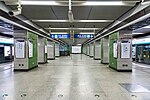Beijing Lu Xun Museum
Biographical museums in ChinaChinese museum stubsHistoric house museums in ChinaLiterary museums in ChinaLu Xun ... and 4 more
Major National Historical and Cultural Sites in BeijingMuseums in BeijingNational first-grade museums of ChinaTraditional folk houses in China

The Beijing Lu Xun Museum (Chinese: 北京鲁迅博物馆) is a museum in Fucheng Gate Avenue, Beijing, China. The buildings in which the museum situated at was Lu Xun's former Beijing residence. The writer's house museum was established in 1956. The museum is dedicated to Lu Xun's life and achievements and features large quantities of scripts, photos, pictures related to Lu. In addition to materials related to Lu Xun, the museum contains a large collection of artworks.
Excerpt from the Wikipedia article Beijing Lu Xun Museum (License: CC BY-SA 3.0, Authors, Images).Beijing Lu Xun Museum
小茶叶胡同, Xicheng District Xinjiekou (首都功能核心区)
Geographical coordinates (GPS) Address Nearby Places Show on map
Geographical coordinates (GPS)
| Latitude | Longitude |
|---|---|
| N 39.925808 ° | E 116.358727 ° |
Address
小茶叶胡同
小茶叶胡同
100032 Xicheng District, Xinjiekou (首都功能核心区)
Beijing, China
Open on Google Maps











